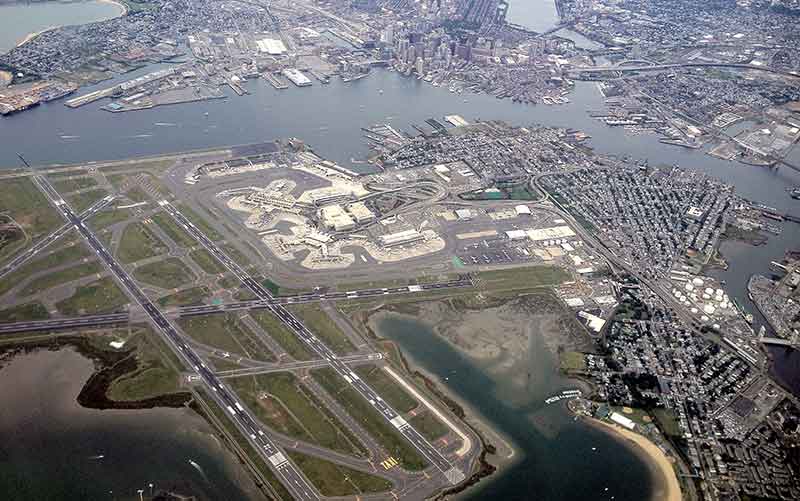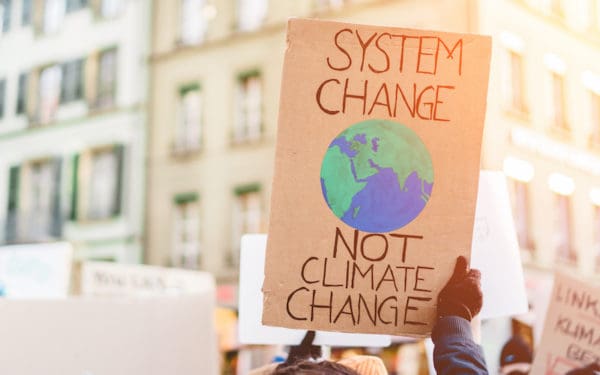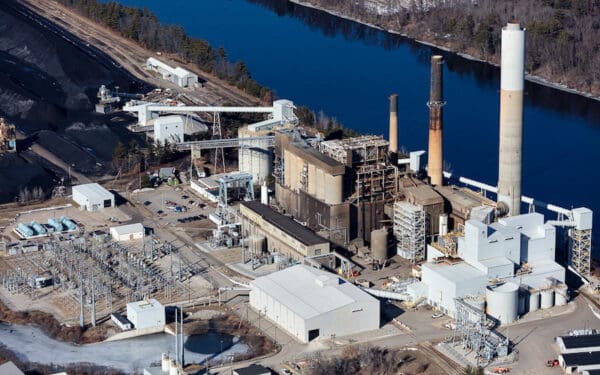
Passenger traffic at Logan has increased dramatically since a parking space cap was enacted more than 40 years ago. A landmark new agreement will help ease parking constraints and ensure travelers have more convenient and clean options for getting to and from the airport.
More than 25 years ago, CLF helped turn Boston’s Big Dig, one of the largest road projects ever built in the United States, into a major investment in car-free travel. Our push for clean public transportation commitments to offset the pollution the road project would create resulted in new rail service and subway trains, better parking options, and modernized T stations.
Today, we’ve reached another landmark agreement to cut carbon pollution and improve public transit access in Boston. The Massachusetts Port Authority (Massport), which owns and operates Logan Airport, has agreed to offset a large parking expansion at the airport with an impressive list of transit improvements. The agreement also commits Massport to electrifying its entire fleet of ground-service equipment – for which electric alternatives are commercially available – over the next 10 years.
Parking Constraints at Logan Airport
Logan Airport hasn’t been allowed to add commercial parking spaces since 1975, when a freeze on new spaces was enacted to combat the region’s (and country’s) air pollution problem. The freeze was meant to help bring eastern Massachusetts into compliance with air quality standards established by the federal Clean Air Act.
Over the last 40 years, however, passengers at Logan have skyrocketed 220 percent, putting a significant strain on its 21,088 parking spaces, especially during peak travel periods. Public transit options to the airport also haven’t kept up with demand, despite the welcome introduction of direct Silver Line service in 2005. To address these constraints, earlier this year Massport formally proposed lifting the freeze and adding 5,000 parking spaces.
Simply Adding Parking Spaces Isn’t the Solution
As an active supporter of the parking freeze, we at CLF originally opposed the 5,000-space increase. After all, the goal of the parking freeze has been to reduce air pollution by capping the amount of commercial parking spaces available. With parking intentionally limited, passengers are incentivized to seek alternative, less-polluting ways to get to and from the airport, such as public transit or high-occupancy vehicles (HOVs) like van, livery, and shuttle services.
Concerns over air pollution – and the health impacts it brings – weren’t our only concern. While additional parking would at first appear customer-friendly to Logan travelers, the reality is that more parking yields more one- and two-passenger trips to the airport. That in turn means more backups on already congested roadways, tunnels, and feeder roads.
Planning extra time for traffic jams forces travelers to sacrifice more valuable time from work and home to avoid missed flights. This familiar pattern forces the somewhat counter-intuitive recognition that increased parking volume actually diminishes the travel experience for Logan passengers, rather than satisfying consumer needs.
The impacts go beyond individual travelers, however. More vehicle congestion compromises local air quality in communities surrounding the airport, as well as local mobility and the accessibility of small businesses to both customers and deliveries. And the carbon pollution from such an increase in driving could make it harder for the Commonwealth to meet its goal to cut climate-damaging emissions from the transportation sector, as mandated by the state’s Global Warming Solutions Act.
A Better Solution
Massport’s CEO Tom Glynn responded to our opposition by opening a dialogue that ultimately resulted in a landmark agreement with CLF. As part of the agreement, Massport will:
- Double the number of Silver Line vehicles owned and operated by Massport to a total of 16, making it more convenient to use the transit line for airport travel;
- Increase capacity on its Logan Express bus service by 10 percent;
- Up the number of passengers reaching the airport in high occupancy vehicles to at least 35.5 percent of total passengers (compared to the current 30.5 percent) by the end of 2022. By 2027, that number must reach 40 percent;
- Free T access for certain airport employees, so they can leave their cars at home;
- Over the next 10 years, gradually replace all of its ground-service equipment with electric alternatives (this is the first such commitment in the country);
- Work to ensure that, by 2027, 60 percent of taxiing for commercial aircraft will be performed by electric tugs.
Furthermore, Massport has agreed to outfit all of its parking facilities with electric vehicle charging stations. Likewise, all taxi, livery, and transportation network company pools at the airport will be outfitted with high-speed vehicle charging stations and made available at no cost. At the same time, staring in January of 2019, if your cab, livery vehicle, Uber, or Lyft is electric, it will be able to jump to the front of the line, second only to cars with at least three passengers. Ground transportation personnel will also encourage passengers to share rides.
A Greener Logan is Good for Us All
Managing ground transportation to the airport as passenger volumes increase is a major challenge for Massport. But 5,000 new parking spaces alone would only have provided temporary relief – at a huge cost to the quality of life of surrounding communities, our air quality, and our climate.
Thanks to this landmark agreement, the increase in parking at Logan will now occur not in isolation, but rather as one component of a multi-pronged and comprehensive program to reduce the overall environmental, emissions, and traffic impact of ground transportation and ground-service equipment at the airport. This program has the explicit goal of encouraging an increasing number of passengers to get to and from the airport via a high occupancy vehicle, with a specific percentage increase required by certain dates, and to increase electrification of the airport.
Greenhouse gas, soot, and smog emissions from airports are among the most difficult to regulate. Federal agencies have done little to address them and state agencies often lack authority to step in. CLF’s demand for offsetting emission reductions will make Logan Airport not only greener but also more accessible.



